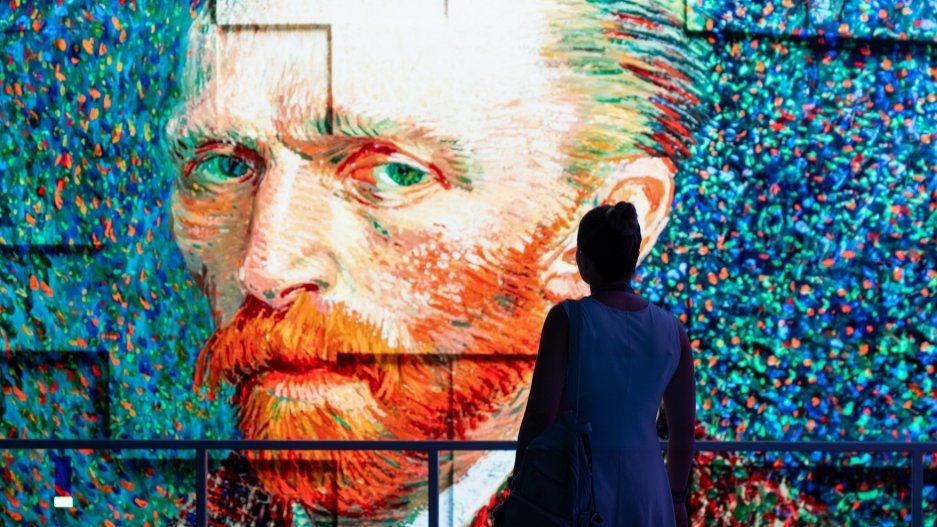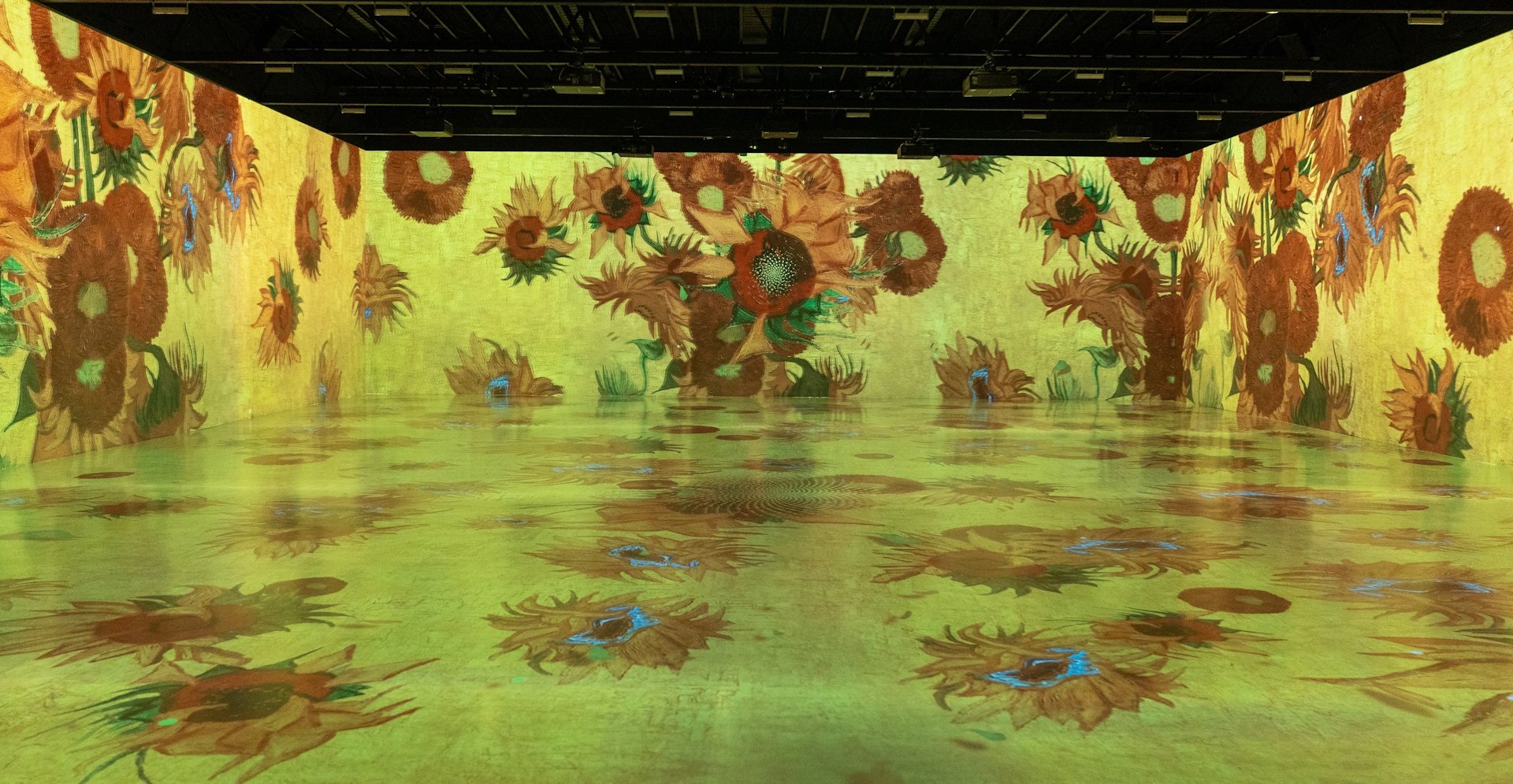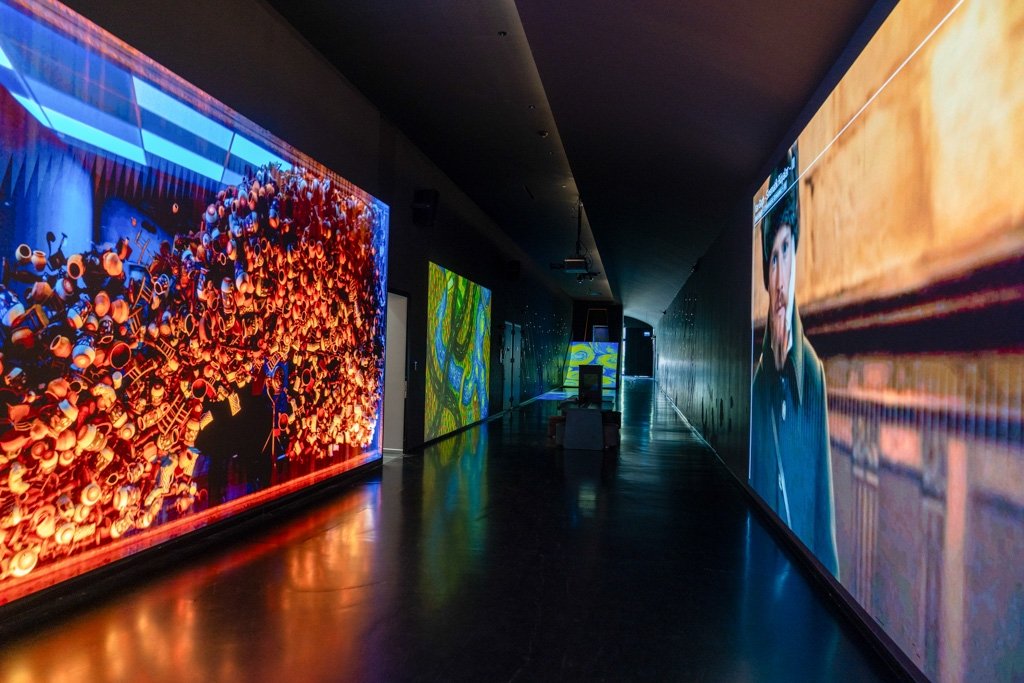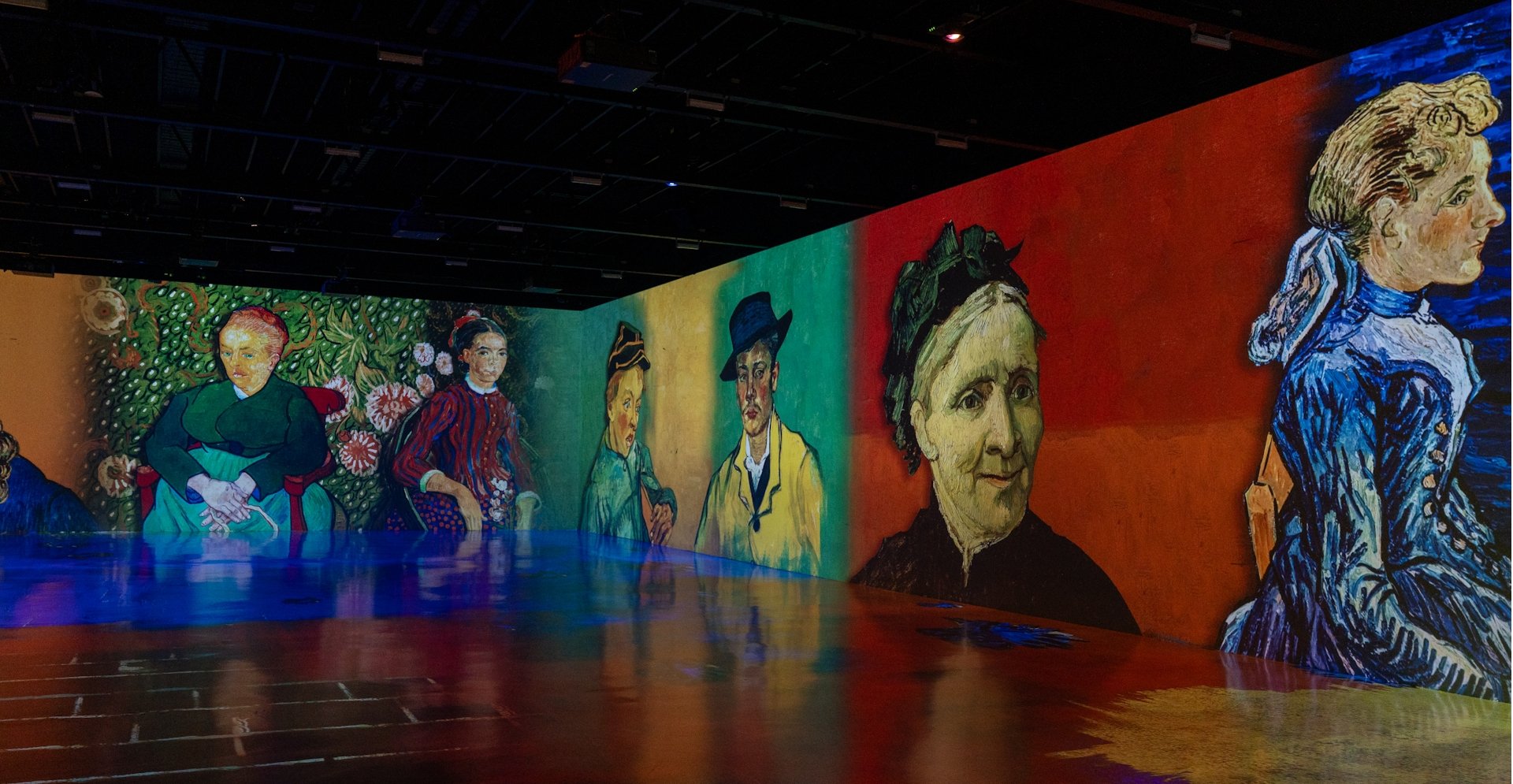
The Digital Experience Museum, opened by Istanbul Metropolitan Municipality (IBB) Culture Inc. in Sütlüce, welcomes art lovers with its new exhibition titled “Van Gogh: In the Footsteps of Light.” In this exhibition, where digital technology meets art, visitors are drawn into Van Gogh’s colors, brushstrokes and imagination. However, not every moment of this journey is equally captivating; while some sections offer a dazzling experience, others leave visitors disappointed.
The exhibition features a total of 13 pieces, 10 of which were specially prepared for the Digital Experience Center. It consists of four rooms and a corridor. Each section approaches the artist’s life and works from a different perspective. Our first stop is the Digital Room, which features interactive experiences based on Van Gogh’s life, letters and works.
Following Van Gogh’s life story in chronological order, witnessing his letters and the stories behind his works is a great opportunity to get to know the artist and bear witness to his story. You see digital versions of his paintings on a screen moving along a rail and when you scroll, you get detailed information about the pieces. Accessing Van Gogh’s works, scattered across many museums around the world, in this way – and instantly obtaining information – is a practical experience for those who are curious about the artist or new to him.
In addition, interactive games and touch-sensitive digital walls have been designed to draw visitors into the story from the very first moment. However, a more interesting interactive game could have been considered instead of the puzzle game prepared for this room. We have seen this type of activity in many museums before. Considering that the exhibition is located in a digital design center, we would have expected a more original and innovative application.
Also, Van Gogh’s handwriting is presented in the original French, but I’m not sure if there are Turkish translations. Although short quotes from his letters appear on the digital wall, this is a significant omission for enthusiasts like me who want to understand the artist’s intellectual life through his own words. In an exhibition as assertive as this one, visitors should be given direct access to the artist’s inner world.
The next stop is the much-discussed and eagerly awaited Virtual Reality Room. Here, a VR experience based on Van Gogh’s palette is presented. Unfortunately, this idea, which sounds impressive on paper, does not have the same effect in practice. The digital shifts you experience when you put on the glasses – the image sometimes staying above, sometimes below – break the viewer’s spell. In addition, the freedom of movement, which is a fundamental feature of VR, is quite limited here. Even when you stand up, the staff warns you.
In contrast, the VR experience I had at the Musee d’Orsay allowed me to truly immerse myself in the story from the very first minutes; having the painters accompany me enhanced the story and blurred the line between reality and virtuality. The fact that it was difficult to return to real life for a while after the experience at the Musee d’Orsay ended was the greatest proof of VR’s success. This experience in Istanbul, however, fails to create the same impact due to both technical issues and a weak narrative. While the exhibition is titled “Van Gogh: In the Footsteps of Light,” the absence of Van Gogh himself in this story struck me as a major flaw. A palette without Van Gogh felt like a painting that lost its soul.
Fortunately, the disappointment does not last long, because next up is the most powerful area of the exhibition: the Immersive Experience Room. Stepping into colors and patterns in this spacious and high-ceilinged room, becoming a part of Van Gogh’s paintings, is truly mesmerizing. Behind the artist’s intense gaze, his flowers, fields, water lilies and sunsets appear one after another. Suddenly, you find yourself in a room at the Saint-Remy mental hospital, which held an important place in the artist’s life, with wooden floors and blue walls. After witnessing perhaps the gloomiest moments of Van Gogh’s unsettled state of mind, you move on to another view from the window, “The Starry Night,” where the whole room enters the center of blues, purples, yellow stars and the color of light. Pursuing the figures with such an experience – sometimes becoming a part of them, sometimes just getting lost in the flow of colors – means not just seeing art but actually living it. This section gave me hope for how digital technology can be used as a fascinating tool in art.
The following section is the Digital Corridor, a very successful transition area that breathes life into the exhibition. Interactive surfaces that respond to movement and play areas are located here. A slide passing through “The Starry Night” creates a fun area for young visitors. Images of Van Gogh at different ages have been brought to life with artificial intelligence. Sometimes you walk together in a field of daisies; other times you witness him working at his desk. This digital companionship with the artist, the images in different places and the moments when you occasionally make eye contact were quite impressive. In particular, the realism of the images of him walking in the streets transported you, if only for a short time, to 19th-century Arles. Seeing Van Gogh, his ear bandaged, approaching you and feeling the pain on his face was perhaps the moment closest to the artist’s soul. This corridor served as an important bond that strengthened the rhythm of the exhibition.
The final stop of the exhibition was the Augmented Reality Room. Here, artificial intelligence analyzed more than 2,000 Van Gogh paintings to produce original pieces in the artist’s style. This experience, completed by Van Gogh’s subconscious, was awe-inspiring in showing the intersection of technology and art. The images produced by artificial intelligence sometimes evoked Van Gogh’s familiar palette, while at other times they conjured up experiments the artist never attempted.
Overall, I believe this exhibition at the Digital Experience Museum is a very important step for Istanbul. Experiencing art not only in galleries but also as a multilayered experience through the tools offered by technology is inspiring, especially for young audiences. Of course, there are points to criticize: the weakness of the VR room, technical glitches in some sections and shortcomings in content selection. However, beyond these, the exhibition’s overall atmosphere and strong sections like the Immersive Experience Room offer an unforgettable opportunity for those who want to approach Van Gogh’s world.
Van Gogh pursued light and color throughout his life. If the fields brought to life by his brushstrokes, the stars spinning in the sky and his inner storms still touch us today, this exhibition, in a sense, brings the trace of that light to Istanbul – with its shortcomings, its strengths, but most of all, its effort to convey the artist’s spirit.















